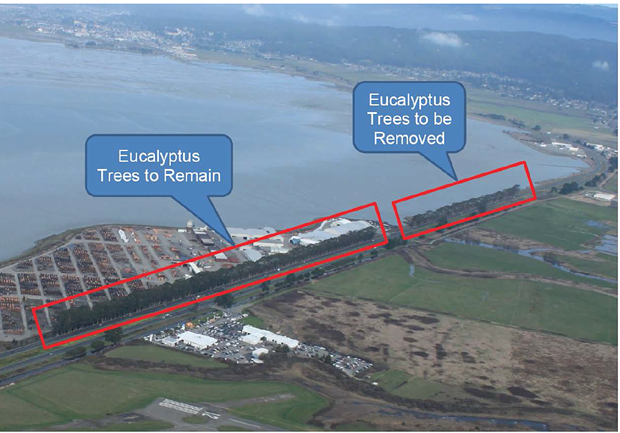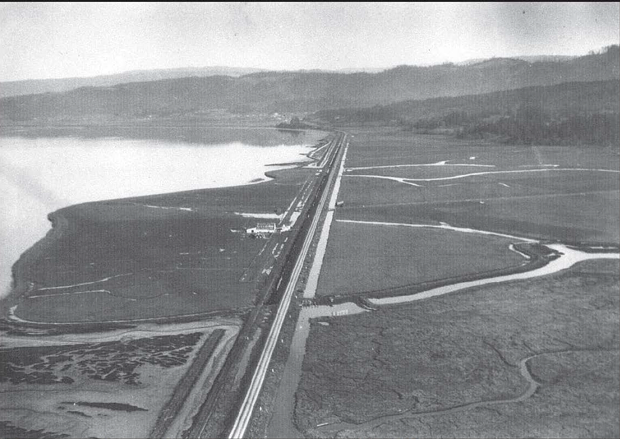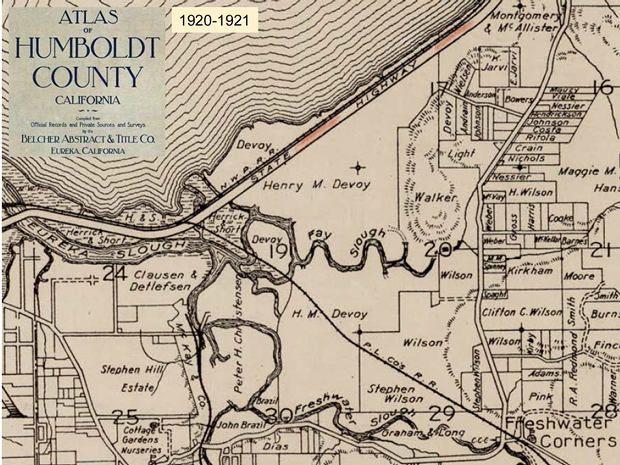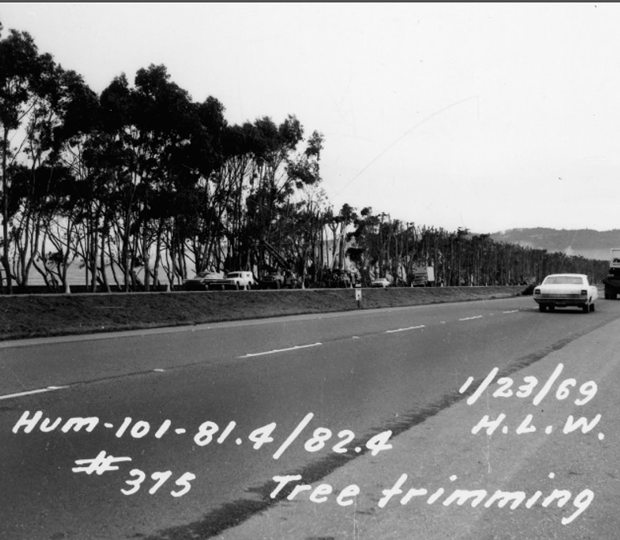Monday, July 23, 2018
County Staff: Eucalyptus Removal a Must for Bay Trail
Posted By Thadeus Greenson @ThadeusGreenson on Mon, Jul 23, 2018 at 12:27 PM
The Humboldt County Public Works Department is set to tell the Board of Supervisors that moving forward with the Humboldt Bay Trail Project is going to necessitate the removal of more than 200 eucalyptus trees along U.S. Highway 101 north of the old California Redwood Company mill.
While conceding that it received a host of comments urging preservation of the 90-year-old trees in the county’s California Environmental Quality Act review of the project, the department warns it will “recommend termination of the project if the northern group of eucalyptus trees cannot be removed.”
In an 11-page CEQA comment evaluation memo, the department makes the case that the trees would pose a danger to users of the yet-to-be constructed 4.2-mile segment of multi-use trail connecting Eureka and Arcata, as the trail would fall within 10 to 15 feet of the trees, between the railroad tracks and the highway.
“Trail users would be situated within the failure zone of many elevated limbs measuring 6 to 12 inches in diameter and weighing hundreds of pounds,” states the memo, citing the county’s Hazard Tree Plan and the Tree Risk Assessment, which apparently sets the national standard for such decisions.
The memo also includes newspaper accounts of several eucalyptus-related horror stories: the tree that fell on a wedding party, killing a 61-year-old grandmother, in Whittier last year; a woman seriously injured by a falling 10-foot branch while walking with her boyfriend in San Diego in 2013; and a 4-year-old girl killed on a playground in Highland Park by a falling tree limb in 1990. At least a couple of the stories include reports of resulting lawsuits.
In all, the department is recommending removal of 219 trees — or 42 percent of the entire row.
The trees were planted in 1921 — four years before the highway was paved — by Henry Devoy, who is famous for donating 120 acres of land in Southern Humboldt that would become Richardson Grove State Park and owned 1,100 acres of ranchland in the Fay Slough area. According to the memo, Devoy planted the trees to serve as a wind break for his dairy and chose eucalyptus because it's fast growing.
But county staff has determined the trees don’t rise to the level of a cultural resource that warrants protecting under CEQA, as they are not necessarily unique, they don’t relate directly to any of Devoy’s “historically significant” contributions to the local area (like the donation of Ricahrdson Grove), they weren’t part of an “innovative planting plan,” and they don’t provide important information regarding local history.
County staff also reviewed whether the trees are an aesthetic resource worth preserving but determined that, while they have “aesthetic qualities that are appreciated and valued by many commenters,” found their removal would be a less than significant impact under CEQA. Similarly, staff found their removal would have less-than-significant impacts on biological resources in the area — namely raptors and other birds who may use the trees for roosting and nesting, as staff states the trees have not been documented as a corridor for wildlife movement and no nests were spotted during a recent survey.
Staff evaluated four alternatives to removing the trees suggested by commenters but found none to be acceptable. The idea to let the trees remain and include signage warning of the dangers of falling limbs would not address the “safety hazards,” according to the memo. Similarly, it states that the idea to re-route the trail onto the railroad tracks for that section would not only be inconsistent with North Coast Railroad Authority trail policy but would also still leave trail users in the “target zone of the trees,” leaving the safety risks unchanged. The idea to implement a regular program of inspection and trimming operations would be costly — to the tune of $50,000 to $100,000 annually — according to the memo, which concludes, “it will not be feasible to implement an effective tree maintenance program that alleviates the safety risks to an acceptable level.” Finally, the idea to construct an overhang to protect trail users from falling limbs and debris is deemed unacceptable for a number of reasons, among them the unlikelihood of getting necessary approval from the California Coastal Commission and the projected high costs of construction and maintenance.
The board of supervisors is slated to decide the matter at its July 31 meeting, when staff will recommend that it approve the CEQA environmental review and approve the project as described in the document. For more information, read the full public works memo here, the Bay Trail website here and check out the meeting agenda here when it’s posted, which will likely be sometime Friday.
While conceding that it received a host of comments urging preservation of the 90-year-old trees in the county’s California Environmental Quality Act review of the project, the department warns it will “recommend termination of the project if the northern group of eucalyptus trees cannot be removed.”
In an 11-page CEQA comment evaluation memo, the department makes the case that the trees would pose a danger to users of the yet-to-be constructed 4.2-mile segment of multi-use trail connecting Eureka and Arcata, as the trail would fall within 10 to 15 feet of the trees, between the railroad tracks and the highway.
“Trail users would be situated within the failure zone of many elevated limbs measuring 6 to 12 inches in diameter and weighing hundreds of pounds,” states the memo, citing the county’s Hazard Tree Plan and the Tree Risk Assessment, which apparently sets the national standard for such decisions.
The memo also includes newspaper accounts of several eucalyptus-related horror stories: the tree that fell on a wedding party, killing a 61-year-old grandmother, in Whittier last year; a woman seriously injured by a falling 10-foot branch while walking with her boyfriend in San Diego in 2013; and a 4-year-old girl killed on a playground in Highland Park by a falling tree limb in 1990. At least a couple of the stories include reports of resulting lawsuits.
In all, the department is recommending removal of 219 trees — or 42 percent of the entire row.
The trees were planted in 1921 — four years before the highway was paved — by Henry Devoy, who is famous for donating 120 acres of land in Southern Humboldt that would become Richardson Grove State Park and owned 1,100 acres of ranchland in the Fay Slough area. According to the memo, Devoy planted the trees to serve as a wind break for his dairy and chose eucalyptus because it's fast growing.
But county staff has determined the trees don’t rise to the level of a cultural resource that warrants protecting under CEQA, as they are not necessarily unique, they don’t relate directly to any of Devoy’s “historically significant” contributions to the local area (like the donation of Ricahrdson Grove), they weren’t part of an “innovative planting plan,” and they don’t provide important information regarding local history.
County staff also reviewed whether the trees are an aesthetic resource worth preserving but determined that, while they have “aesthetic qualities that are appreciated and valued by many commenters,” found their removal would be a less than significant impact under CEQA. Similarly, staff found their removal would have less-than-significant impacts on biological resources in the area — namely raptors and other birds who may use the trees for roosting and nesting, as staff states the trees have not been documented as a corridor for wildlife movement and no nests were spotted during a recent survey.
Staff evaluated four alternatives to removing the trees suggested by commenters but found none to be acceptable. The idea to let the trees remain and include signage warning of the dangers of falling limbs would not address the “safety hazards,” according to the memo. Similarly, it states that the idea to re-route the trail onto the railroad tracks for that section would not only be inconsistent with North Coast Railroad Authority trail policy but would also still leave trail users in the “target zone of the trees,” leaving the safety risks unchanged. The idea to implement a regular program of inspection and trimming operations would be costly — to the tune of $50,000 to $100,000 annually — according to the memo, which concludes, “it will not be feasible to implement an effective tree maintenance program that alleviates the safety risks to an acceptable level.” Finally, the idea to construct an overhang to protect trail users from falling limbs and debris is deemed unacceptable for a number of reasons, among them the unlikelihood of getting necessary approval from the California Coastal Commission and the projected high costs of construction and maintenance.
The board of supervisors is slated to decide the matter at its July 31 meeting, when staff will recommend that it approve the CEQA environmental review and approve the project as described in the document. For more information, read the full public works memo here, the Bay Trail website here and check out the meeting agenda here when it’s posted, which will likely be sometime Friday.
Speaking of...
-

One Killed, Another Injured in 101 Crash
Apr 2, 2024 -

CHP: Three Killed in Crash on 101 North of Rio Dell
Jan 22, 2024 -
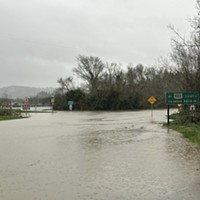
UPDATE: Local Emergency Declared Due to Storm Damage
Jan 15, 2024 - More »
Comments (4)
Showing 1-4 of 4
